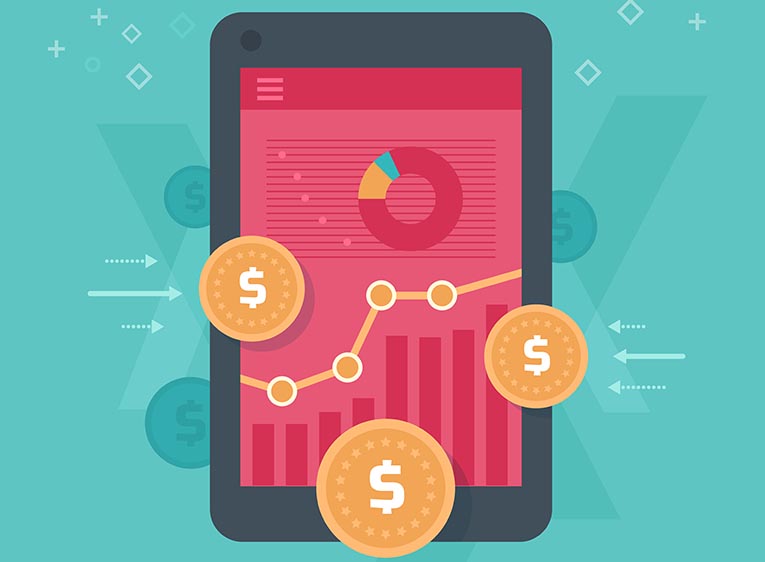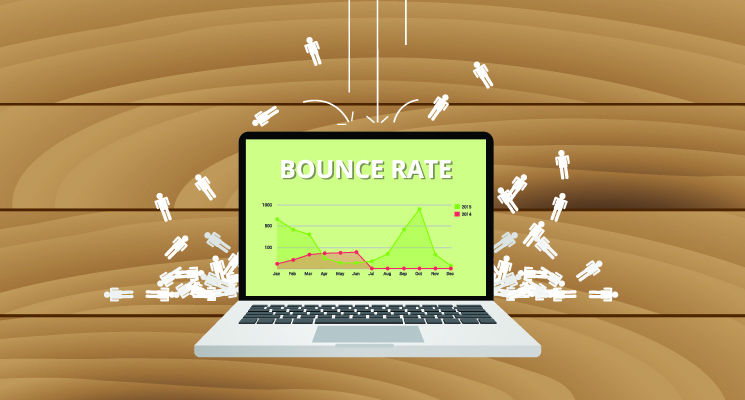
Something that we get asked about a lot when we bring on new clients that are looking to improve their site’s performance is bounce rate. Bounce rate tends to jump out as the one thing that doesn’t immediately make sense when you’re going over your google analytics stats. Understanding what bounce rate is, and why it matters, can be the key to improving your site’s overall effectiveness. Here’s a cold hard definition...
Bounce Rate: The percentage of visitors to a website don’t navigate to any other page on the website before leaving.
While a lot of people might come to your site, they’re unlikely to develop a real interest in your business if they don’t hang around long enough to look at any other pages. A site’s bounce rate is a strong indicator of how well visitors are receiving the website in general.
What’s a Good Bounce Rate?
A “normal” bounce rate varies a bit depending on the type of site you’re running and how you’re bringing in visitors (PPC, Social Media, Email etc…), but here’s our general rule of thumb.
A really excellent bounce rate is between 20% to 40%, but a rate in and around 50% is perfectly respectable.
If your bounce rate is under 20% or so, it might be something to look at more carefully. While such a good reading is possible, it could also be a false result stemming from a technical problem.
When you start going above 65% or 70% it’s time to consider that your site isn’t meeting the expectations of its users, either because of content or a coding problem.
What Causes High Bounce Rates?

Your bounce rate is affected by a number of factors, and if you’re trying to lower a high bounce rate you’ll have to explore a few possible causes. Again what constitutes a “high” bounce rate depends on a number of different factors, so try to take all of your variables into account. Some of the most common problems you’ll run into are:
Misleading Ads and Poor Design
If you’re using PPC to drive traffic, then ads that aren’t well connected to the content of the landing page can confuse and disappoint visitors. It’s important that people see what they were hoping for when they click on an ad. That also means that your site needs to make a good and authoritative first impression. A badly designed website can be off-putting to visitors, especially if it’s is difficult to reach other important content.
A well-built website that’s easy to navigate will lead readers from one page to the next in a way that makes the journey easy, useful, and interesting for them.
Slow Site Speeds and Technical Issues
With the bandwidth offered by our internet providers today, users aren’t willing to wait more than a couple of seconds for a site to load. If your landing pages have slow load speeds, your bounce rate might be increased by people leaving before they ever even see the page.
Similarly, no one wants to bounce from one 404 error to another. Having broken links, broken shopping carts, or duplicate content looks unprofessional and can frustrate users.
Desktop Vs. Mobile
Does your site work on mobile devices? Since we do so much of our web-surfing on our phones now, not having a mobile-friendly design can irritate and drive away visitors who don’t want to wait for bulky pages to load on slow mobile carrier connections, and don’t want to deal with zooming in and out to find and read your content.
Bad Linking
Publishing guest posts or press releases and building links can be a great way to win exposure and improve your search engine rankings. However, if you succeed in reaching your audience it’s especially important that those links are relevant and point back to landing pages that are useful and relevant to the people clicking on those links. A bad link is like false advertising, and will inevitably confuse and put off users.
Bad Content and Bad Calls to Action
Your site’s value is most directly reflected in its content. If your content doesn’t meet the needs of your site’s users, then they have no reason to stick around. One important thing that makes good content is having solid calls to action. One of the best ways to get people to look at other pages on your site is to ask them to. Not having a call to action, or having a bad one, brings people to the end of the page feeling like they’re done. It’s up to you to convince them that they’re not.
What Can I Do?
If you’re trying to lower your bounce rate, the above issues are generally the first things to look at. Some pretty amazing tools exist that you can use to test your landing pages for problems, and there are also a lot of great articles out there on the web to give you tips on how to go about optimizing your landing pages to improve your bounce rates, and ultimately your conversions.
If you can’t figure out what the problem is, or you’re unsure about how to deal with one that you’re aware of, it’s a good time to turn to a professional.